| Issue #82 • July/August, 2003 |
We’ve heard stories about how good dandelions are. What one usually hears from enthusiastic wild food promoters is, “All you need to do is find very young dandelion leaves in the early spring, before the flower stalks appear. If you do this they won’t be bitter. They’ll be the most delicious and nutritious fresh greens you will ever eat.”
Well my friends, that was not reflected in my early or continuing experiences with the plant. Was I doing something wrong? Why is it that you hear and read such good things about a plant that, even in its youth, is often excruciatingly bitter?
|
What I’m going to do is explain to you why I think that dandelions are indeed mostly bitter in the raw format almost any ageand share with you the secrets of transforming those same dandelions into the genuinely delicious food that so many rave about. We’ll also dispel some misconceptions and old folk tales so you can get some practical use out of this abundant food source.
When I was first learning primitive living skills, I was intrigued by the thought of surviving off of what nature provides. Of all the plants talked about in the few survival books I had collected, dandelions were familiar and they were right under foot. So being the adventurous testosterone-ridden young male that I was, I tried them. Yacht, pituey, spit-spit-spit, blah! Well, so much for machismo. The bitterness was overwhelming. This did not help my interest in plants. I phased into animals and other survival skills for a while so that my taste buds could grow back.
On occasion while I was still living at home, my mom, trying to emulate a tradition of our Greek ancestors, would prepare dandelions gathered in a nearby vacant lot. She would serve them and we would all be in agony. Of course my parents, trying to be good role models, would hide their pain in an effort to convince us that these greens were, in fact, good. Can any of you explain to me the psychology of this? I’m still baffled to this day.
Once I got to college I became a more serious student of wild foods. By more serious, I mean that I began reading beyond the “this plant is edible” statement to the “this is how you prepare it” section. To this day, this progression to the “how” section is difficult for many eager wannabe primitive technologists. Many people just want to know what’s edible and do not have the patience to learn details. Knowing the details results in the understanding that allows you to be more successful and enjoy what you are eating.
|
According to the books I read, preparing dandelions basically involved boiling the leaves in one or more changes of water. You add more boilings for greens that are more bitter. Authors varied greatly on how many boilings you should do. Most centered on two. I tried two. Done properly, the bitterness will be poured off with the water, leaving the wonderfully rich flavor of the dandelion greens behind. They become quite delicious. If boiled too long, the greens begin to disintegrate.
But some things I was reading and hearing did not add up. I was continually reading in books and hearing from certain individuals that dandelions were not bitter if you got them early enough in the spring. I cannot tell you how many times I tested this theory. The overwhelming mass of my experience was that even the youngest, tiniest leaves were bittertoo bitter, in the raw, for my tastes. Picking them in the early spring before the flower stalks appear is very difficult. The flower stalks appear almost at the same time as the leaves on the earliest dandelions. The early dandelions grow rapidly directly from nutrient providing taproots. Consequently, the small emerging spring leaves are not really required to generate food for the growing flower stalk. The stalk can grow directly from the food provided by the taproot.
Even young dandelions growing directly from seed were bitter. Their lower stalks, totally growing by food generated from the leaves, would not develop until later in the spring.
While working on my Ph.D. about 20 year ago, I designed a survey-driven research project of senior citizens in a rural Michigan farming community. Many of these people were born between 1890 and 1910. Most had grown up in an era where there was no electricity, no cars, no supermarkets. They lived off canned, bagged, and bottled food they bought from the general store, whatever agricultural food they could produce or trade for, and wild foods they gathered from the surrounding area. The wild foods helped to spice up and add diversity to their diets. Dandelions were one of the most commonly eaten foods.
|
When I asked these people if they experienced dandelions and dandelion salads to be bitter, almost everyone interviewed said no, dandelions were not bitter. I was wondering what planet I was visiting. Had all these farmers been replaced by alien pod people? What was I missing here? At some point, I began asking, “How did you prepare your salad?” This is what they told me: “You take a big mess of fresh dandelion greens, you cook up some bacon, you pour the hot grease over the dandelions, you chop up the bacon and sprinkle that over the greens, you cook up a couple of hard boiled eggs, chop them up and disperse them over the greens, you add salt and occasionally vinegar, and there you have itdandelion salad (also known as wilted greens).
The gears in my brain now had something to work with. It was becoming more and more clear to me that anytime experienced dandelion eaters discussed flavor, it was within the context of how it was served, not the fresh plant straight from the ground. Hardly anyone actually eats dandelions that way.
There are also psychological issues here that hide the fact that most people find the raw greens bitter.
First, people who like the “prepared” dandelions they’ve eaten all their lives tend to sing their praises. So even though dandelions are quite changed by the time most people are eating them, they praise the plant. People who consume the leaves fresh hear these praises and wonder what they are missing.
|
Second, when the inexperienced sample the much-hyped fresh dandelion leaves for the first time and don’t like them, they imagine that they are not picking them early enough or otherwise doing something wrong. How could all these dandelion lovers be wrong about the flavor of such a hallowed plant? Some folks are afraid to admit that they cannot stand the flavor.
Third, there are many people today that believe that bitter is good for the liver and proper digestion and that dandelions are a healing food. So they learn over time to tolerate much more bitter than the rest of us. For many of these people bitter becomes an enjoyable flavor. They often describe dandelions as not being bitter. What they really mean is that, to them, the dandelions they eat are not so bitter that they cannot enjoy them. Enjoying bitter is not the same as something not being bitter.
Okay, so enough about what I’ve seen and experienced, let’s get on to the basic principles I’ve come up with that will help you enjoy dandelion greens.
Understanding the “bitter”
Dandelions are bitter because of a class of water soluble chemicals called sesquiterpenes. The key to enjoying dandelions is understanding how to work with these chemicals to minimize their impact on your taste buds.
Sesquiterpenes are part of the milky juice that runs throughout the dandelion plant. They are everywhere except for the non-green flower parts. Sesquiterpenes are less concentrated in rapidly growing leaves, hence the thinking that young leaves are not bitter. Well, in fact they are bitter, just less bitter than they could be.
|
Here are my best theories on what increase the bitterness of dandelions. First, after the spring rains cease, the ground begins to dry. That drying slows the growth of the leaves allowing leaf bitterness to concentrate. Areas kept relatively wet allow dandelions to continue growing rapidly all year long. Second, the more direct sunlight that bakes a leaf, the more sesquiterpenes develop, even in fast growing leaves. Plants growing in shaded areas or deep grass tend to be less bitter. The early spring sun maintains a lower arc across the sky than the summer sun. So less shaded summer leaves will be more bitter. In moist rich shaded soil, I have found optimal fresh dandelion leaves all year long. Note that they are still bitter to most normal humans, but not unworkable.
There are great differences in people regarding the sensation of bitter. People like me, endowed with lots of extra taste buds in the bitter sensitive zones of the tongue, are super tasters for bitter. We can taste bitter a mile away and that taste lingers miserably for some time after the food has been swallowed. Other people have almost no bitter taste buds. These are the people who look at us in disbelief as we agonizingly wince like babies over bitter greens. About one in every 25 of my students cannot taste bitter very well.
Managing the bitterness away
As a result of my extensive experience preparing dandelions and the little I know about the science of taste, here are some conclusions I’ve drawn to bring out the flavor of dandelion greens while limiting the bitter sensation.
1. Dilution: This is where you mix your dandelions with something that dilutes the bitterness. This could include mixing it with milder greens (like miner’s lettuce or chickweed) or putting in some dish with other ingredients so that the proportion of dandelion leaf is reduced relative to the overall food. One of the best ways to use fresh dandelions in a salad is to chop them into small pieces and sprinkle them over a mixed salad. The bitterness of the dandelions is lost, but the overall flavor of the salad is enhanced. The key to this is not making dandelions more than one-fifth the mass of the total salad and having the pieces be small enough so that they do not overwhelm the taste buds.
2. Masking: This is a taste bud thing. Fat is the main ingredient for doing this. This is why many of the old-timers (like the farmers mentioned earlier) poured bacon grease over their dandelions. My understanding is that fat, in the form of oils, butter, bacon grease, etc., cover taste bud receptors and reduce their sensitivity to the harshest forms of the bitterness. Fat also enhances the flavor of the greens.
|
3. Distracting: Adding sugar, vinegar, or other impactful flavor to a salad causes your brain to have competing taste sensations to the bitter one. This makes the bitterness less prominent and sometimes lost in the other flavors.
4. Leaching: This is the process mentioned earlier of boiling out the water soluble sesquiterpenes, leaving a wonderfully rich flavor. In my experience, using fresh, rapidly growing greens, you only have to boil them once for three to five minutes for them to release most of their bitterness. I typically just adorn them with a little olive oil and I’m a happy camper. The technique of leaching goes like this: Start a pot of rapidly boiling water, chop up the greens to about one inch pieces, put them in the water, stir to keep them submerged. After 3 minutes, sample a small piece. If not bitter, remove the greens from the water and serve hot. If still bitter, leave the greens in the boiling water. Sample again after five minutes. If still bitter, consider transferring them into a second pot of boiling water for three to five minutes. In my opinion, if they need more cooking than that, they are too bitter.
Some people prefer diluting, masking, and distracting to leaching because they can still eat fresh uncooked leaves. Others prefer cooked greens. Of course nobody uses these labels outside of my students. Normal humans like the farmers mentioned earlier just prepare their foods so they taste good. They do not think of bacon grease, bacon bits, shredded hard boiled eggs, and vinegar as diluting, masking and distracting them from bitterness. They just like their salad dressing.
You are now armed with the kinds of information that will help you get more satisfaction out of your dandelion greens. For me, a melted cheese and dandelion sandwich sounds great right now.
Dr. John Kallas is the owner of Wild Food Adventures, Institute for the Study of Edible Wild Plants and Other Foragables. He has been researching, teaching, and writing about wild foods for more than 25 years. For more information go to: www.wildfoodadventures.com, (503) 775-3828, Wild Food Adventures, 5036 SE Mitchell St, Portland, OR 98206.


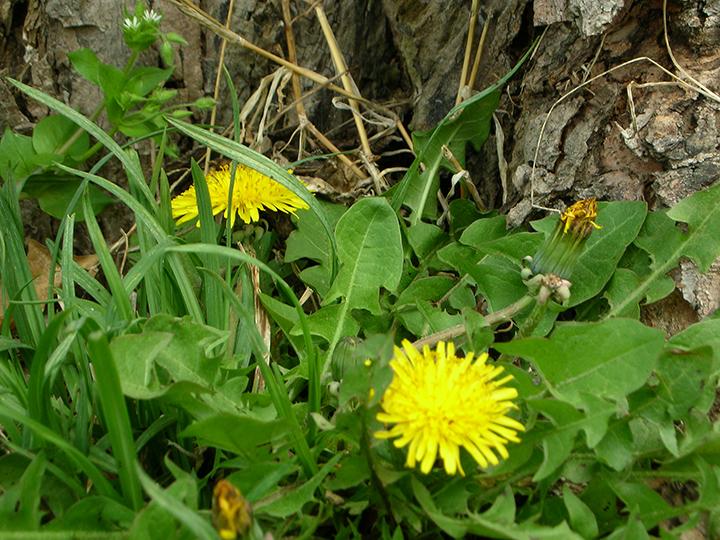







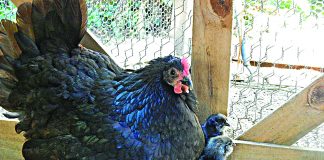





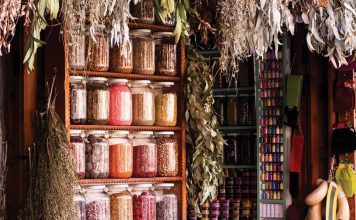
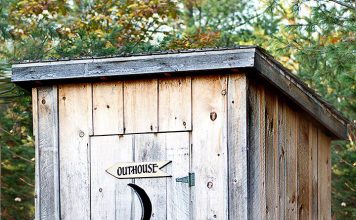

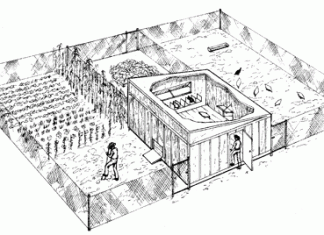
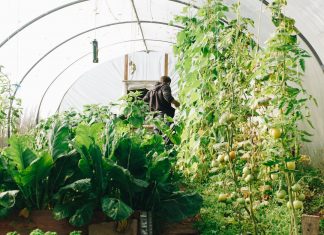
I collected seeds and anxiously waited for them to grow on a pot on my west facing boiling hot balcony. I tasted one like leaf and…ACK! SO bitter! I like bitter greens but will plant another crop in the shade. Thanks for sharing all of your thoughts, research and insight!
When I was little, my grandmother would stop her car without ANY warning, jump out of the car and grab a mess of dandelion greens. It didn’t matter if we were driving on the interstate! She was from the country, but we lived in the city now, so I never knew when she would do that kind of thing. She cooked them with bacon grease and I remember liking them. Today was the first time I tried to cook them myself, and mine were sooo bitter. Next time I will boil them first. She also like her coffee black… maybe their pallets were a bit different back then?
You convinced me to give them another chance. And then, as I stepped outside I noticed a HUGE patch of garlic mustard….. I applied the same idea (par-boil) to them, and now I have a fabulous dish of rustic grated potatoes and garlic mustard gnocchis!
This is very helpful information! I too have heard so many good things about foraging for wild dandelion leaves, even in the city, and have wondered what I have been missing. The few times I had tried it, they just tasted like grass. This is the first time I’ve found a good explanation for what to look for when gathering wild leaves and how to actually prepare them well. Thank you so much!
I dont know how anyone could read this without hysterically laughing…especially if you fell for the “wait for the fresh tender leaves in early spring theory!” I too began questioning my own taste buds! Thank you for the break down nonetheless!!
Have you ever determined if they have any nutritional value? Other than roughage and filler of course.
My wife’s friend boils them about 15 minutes and then we drink the “tea”. If it is a bit bitter, I find adding a little more water to dilute it, results in a drink not any more bitter than coffee.
Have you tried covering them a few days before picking? A type of blanching.